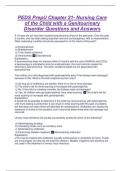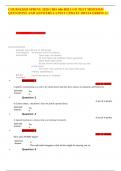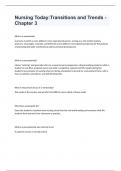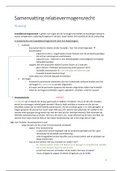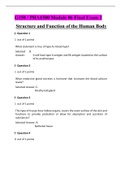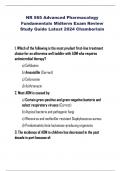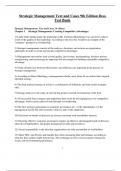Exam (elaborations)
PEDS PrepU Chapter 21- Nursing Care of the Child with a Genitourinary Disorder Questions and Answers
- Course
- Institution
A 15-year-old girl has been experiencing dysmenorrhea for the past year. Over the past 6 months, she has been taking ibuprofen and oral contraceptives, with no improvement. What underlying condition should be assessed for in this client at this point? a) Endometriosis b) Mittelschmerz c) Toxic sho...
[Show more]
